Carbonates
Type of resources
Topics
Keywords
Contact for the resource
Provided by
Years
Formats
Representation types
Update frequencies
-
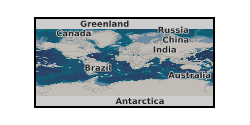
Field photographs showing sedimentology, sediment and porewater collection techniques, coastal Abu Dhabi, UAE. Collected as part of NERC Grant NE/L011050/2: Rethinking carbonate diagenesis: clues to past carbon cycling from an overlooked carbon sink.
-

The stratigraphic scope of the data is 1) the Polarisbreen Group of NE Svalbard (late Tonian to Ediacaran) and 2) top Appin and lower Argyll Groups, western Scotland (late Tonian to Cryogenian). Geochemical data on carbonates includes, in different cases, stable oxygen and carbon isotopes, strontium isotopes and trace elements. Results from Scotland are published in: Fairchild, I.J., Spencer, A.M., Ali, D.O., Anderson, R.P., Anderton, R., Boomer, I., Dove, D., Evans, J.D., Hambrey, M.J., Howe, J., Sawaki, Y., Wang, Z., Shields, G., Skelton, A. Tucker, M.E. and Zhou, Y. 2017 Tonian-Cryogenian boundary sections of Argyll, Scotland. Precambrian Research. doi: 10.1016/j.precamres.2017.09.020. An additional plot of some of the data is in: Ali, D.O., Spencer, A.M., Fairchild, I.J., Chew, K.J., Anderton, R., Levell, B.K., Hambrey, M.J., Dove, D., Le Heron, D.P. 2018. Indicators of relative completeness of the glacial record of the Port Askaig Formation, Garvellach Islands, Scotland. Precambrian Research. Doi: 10.1016/j.precamres.2017.12.005. Results from Svalbard are partly published (Elbobreen Formation, members 3 and 4; Wilsonbreen Formation) in the publications listed below. Data on Elbobreen Formation, members 1 and 2 and the Dracoisen Formation are not published at the time of writing (January 2018). Fairchild, I.J., Bonnand, P., Davies, T., Fleming, E.J., Grassineau, N., Halverson, G.P., Hambrey, M.J., McMillan, E.A., McKay, E., Parkinson, I.J. and Stevenson, C.T.E. 2016 The Late Cryogenian Warm Interval, NE Svalbard: chemostratigraphy and genesis of dolomitic shales. Precambrian Research, 281, 128-154. Fairchild, I.J., Fleming, E.J., Bao, H., Benn, D.I., Boomer, I., Dublyansky, Y.V., Halverson, G.P., Hambrey, M.J., Hendy, C., McMillan, E.A., Spötl, C., Stevenson, C.T.E. and Wynn, P.M. 2016 Continental carbonate facies of a Neoproterozoic panglaciation, NE Svalbard. Sedimentology, 63, 443-497. Benn, D.I., Le Hir, G., Bao, H., Donnadieu, Y., Dumas, C., Fleming, E.J., Hambrey, M.J., McMillan, E.A., Petronis, M.S., Ramstein, G., Stevenson, C.T.E., Wynn, P.M. and Fairchild, I.J. 2015 Orbitally forced ice sheet fluctuations at the end of the Marinoan Snowball Earth glaciation Nature Geoscience. 8, 704-707. Fleming, E.J. (2014) Magnetic, Structural and Sedimentological Analysis of Glacial Sediments: Insights from Modern, Quaternary and Neoproterozoic Environments. Unpublished PhD Thesis. University of Birmingham. Available at: http://etheses.bham.ac.uk/5136/
-
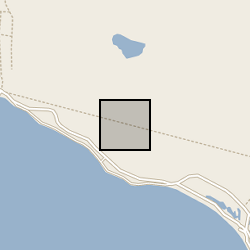
The dataset contains oxygen and carbon isotope measurements from multiple-shell samples of the ostracod Heterocypris punctata, from Core FP2 taken from Freshwater Pond, Barbuda. A chronology for the core is provided by radiocarbon dates. The data, which are further described in Burn et al. (2016) The Holocene, 26(8), 1237-47, provide a proxy for changing rainfall patterns for the period 2000-1555 CE.
-
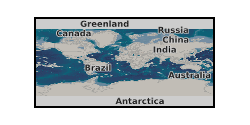
The images in this dataset are a sample of Ketton carbonate from a micro-computed tomography (micro-CT) scan acquired with a voxel resolution of 4.52 µm. This dataset is part of a study on the effects of Voxel Resolution in a study of flow in porous media. A brief overview of this study summarised from Shah et al 2015 follows. A fundamental understanding of flow in porous media at the pore-scale is necessary to be able to upscale average displacement processes from core to reservoir scale. The study of fluid flow in porous media at the pore-scale consists of two key procedures: Imaging reconstruction of three-dimensional (3D) pore space images; and modelling such as with single and two-phase flow simulations with Lattice-Boltzmann (LB) or Pore-Network (PN) Modelling. Here we analyse pore-scale results to predict petrophysical properties such as porosity, single phase permeability and multi-phase properties at different length scales. The fundamental issue is to understand the image resolution dependency of transport properties, in order to up-scale the flow physics from pore to core scale.
-

Carbon and oxygen isotopic composition of bulk sediment carbonate spanning the early and middle Eocene succession recovered from borehole 16/28-Sb01. For description of this sedimentary sequence see Haughton et al. 2005. Petroleum Geology: North-West Europe and Global Perspectives, Proceedings of the 6th Petroleum Geology Conference, 1077–1094.
-
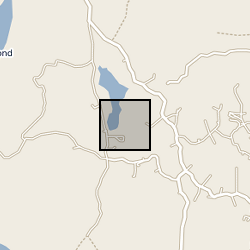
Oxygen and carbon isotope measurements from multiple-shell samples of the ostracod Cypretta brevisapta, and loss-on-ignition determinations, from Core WAGP taken from Wallywash Great Pond, Jamaica. A chronology for the core is provided by radiocarbon dates and short-lived radio-isotopes. The data provide a proxy for changing hydroclimate for the period 2000 – 200 CE.
-
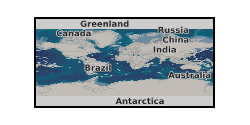
We imaged the steady-state flow of brine and decane at different fractional flows during dual injection in a micro-porous limestone using X-ray micro-tomography. We applied differential imaging on Estaillades carbonate to (a) distinguish micro-porous regions from macro-pores, and (b) determine fluid phase pore occupancy and relative permeability at a capillary number, Ca = 7.3×10-6. The sample porosity was approximately 28 %, with 7% in macro-pores and 21% in pores that could not be directly resolved (micro-porosity). We find that, in addition to brine and decane, a fraction of the macroscopic pore space contains an intermittent phase, which is occupied either by brine or oil during the hour-long scan time. Furthermore, fluid occupancy in micro-porosity was classified into three sub-phases: micro-pore space with oil, micro-pore space with brine, and micro pores partially filled with oil and brine.
-

Data are either (1) depths and spacings between stylolites and faults within Unit IV, (2) images from IODP drill core image logs of the locations of samples observed, (3) photomicrographs and flatbed thin section scans of thin sections cut from samples, (4) SEM BSE or EDS data collected at Cardiff University. These data form the basis of: Leah et al. "Brittle-ductile strain localisation and weakening in pelagic sediments seaward of the Hikurangi margin, New Zealand", Tectonics, Submitted. Images and data from samples collected at IODP Expedition 375 Site U1520 (38°58.1532'S, 179°7.9112'E, 3522.1 mbsl). This is just seaward (east) of the trench of the Hikurangi Margin, New Zealand.
-

The measurements and data were obtained to study the release of carbon dioxide during the chemical weathering of sedimentary rocks, and how these CO2 fluxes were related to environmental parameters (temperature, hydrology). Weathering of sedimentary rocks can result in CO2 release from the oxidation of rock organic carbon oxidation, but also due to the oxidation of sulfide minerals, production of sulfuric acid and subsequent release of CO2 from carbonate minerals. The rock-derived carbon sources are understudied, and form an important part of the geological carbon cycle. The CO2 flux measurements were made on 5 rock chambers (H4, H6, H7, H8 and H13) installed in the Draix-Bleone Critical Zone Observatory, France, on outcrops of Jurassic marls. Measurements and data were collected from December 2016 to May 2019. Regular visits to the site (~4 per year) returned data on total CO2 flux (Total-CO2-flux.csv). This was explored as a function of temperature and ambient hydroclimate (precipitation). The datasets include the total CO2 flux measured at each visit to a chamber, and measurements of the internal chamber temperature. To determine the source of CO2 measured in the chambers, we trapped the CO2 using zeolite sieves and recovered it in the laboratory. The radiocarbon activity (reported as fraction modern, F14C) and its stable isotope composition (d13C) were measured from CO2 collected from chambers H4 and H6 over the sampling period (Radiocarbon-data.csv). These were used in a mixing analysis to partition the source of CO2 using a mixing model approach (Partitioned-CO2-fluxes.csv) as explained in full in the published paper Soulet et al., 2021, Nature Geoscience. We also measured the geochemical characteristics of the bedrocks being measured (rock-geochemical-composition.csv), including the organic carbon concentration, inorganic carbon concentration and their isotopic composition. Finally, we measured environmental variables of interest - the chamber temperature and the air temperature at the Draix-Bleone observatory (chamber-temperature.csv and Air-temperature-at-laval-le-plateau-weather-station.csv, respectively). This research was funded by a European Research Council Starting Grant to Robert Hilton (ROC-CO2 project, grant 678779) and radiocarbon and stable isotope measurements were funded by the Natural Environment Research Council (NERC), UK, (NERC Environmental Isotope Facility NEIF Radiocarbon Allocation 2074.1017) to Guillaume Soulet, Robert Hilton and Mark Garnett. Full details of data analysis and interpretation can be found in Soulet et al., 2021, Temperature control on CO2 emissions from the weathering of sedimentary rocks, Nature Geoscience
-
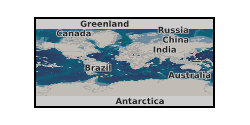
Seawater carbonate system properties and atmospheric carbon dioxide concentration reconstructions from Eocene planktonic foraminifera using boron isotope analyses.
 BGS Data Catalogue
BGS Data Catalogue